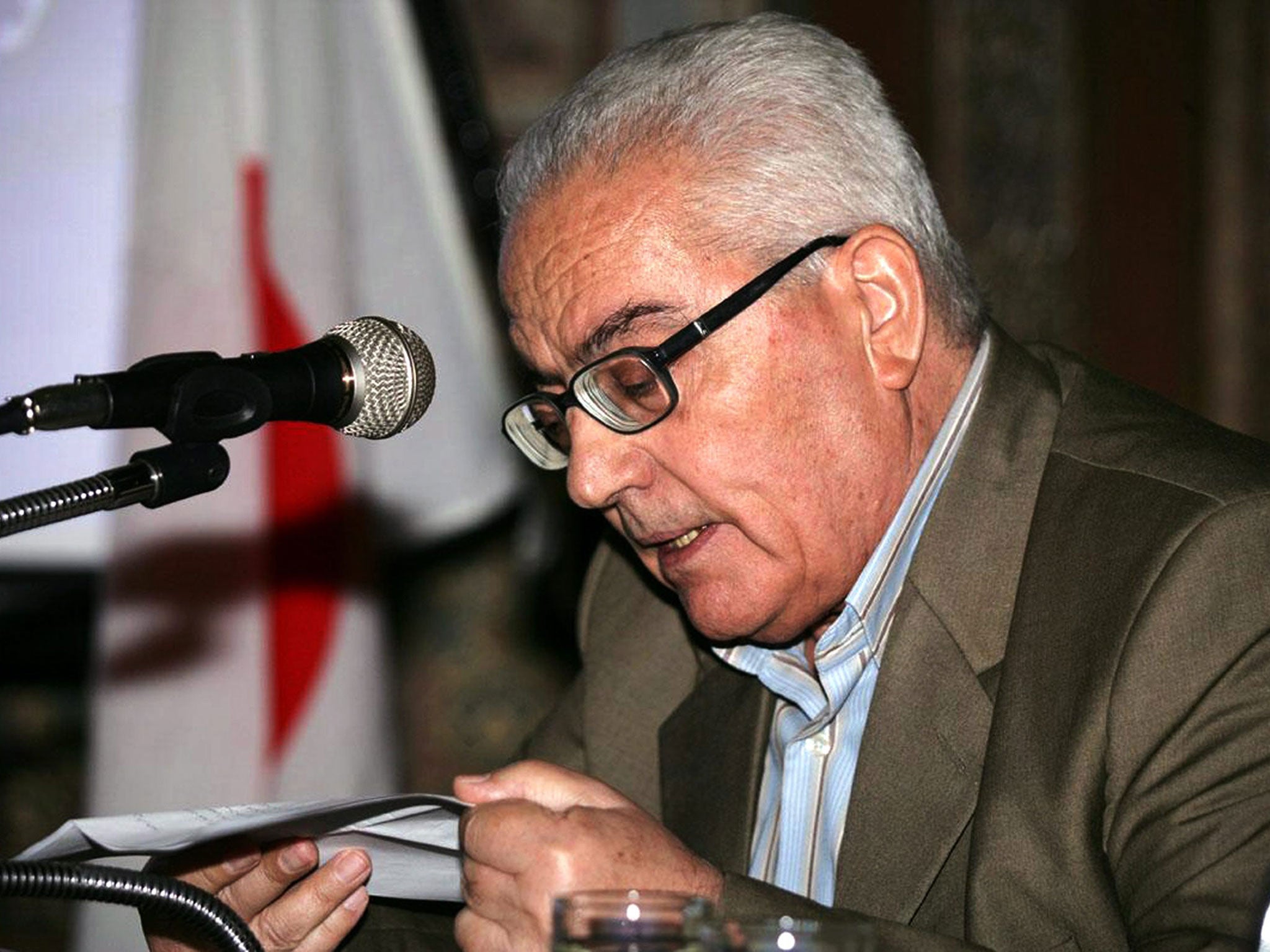Khaled al-Asaad: Authority on the antiquities of the Syrian city of Palmyra who was devoted to studying and protecting its treasures
Al-Asaad was murdered by Isis operatives after he refused to disclose where the city's treasures were hidden

When Isis snatched control of the ancient Syrian city of Palmyra, the man who had devoted his life to protecting its treasures refused to leave. Khaled al-Asaad rebuffed appeals from friends and family concerned about his safety. "Whatever happens," he told his friend, Maamoun Abdulkarim, Syria's minister of antiquities, "I cannot go against my conscience."
Al-Asaad ended up paying for his devotion to the ruins of Palmyra with his life. Isis operatives had arrested him twice. The second time, they held him for a month and tried to force him to disclose where the city's treasures were hidden. He steadfastly refused, and was executed with the brutality that has made Isis so globally notorious. They dragged him into a public square before a masked man beheaded him.
Isis did not disclose that al-Asaad had thwarted their attempts at thievery. Instead, they put up signs over his dead body, accusing him of having been the "director of idolatory" and an "apostate" who "attended infidel conferences".
His nephew, Khaled al-Homsi, said the family had tried to convince Asaad to leave Palmyra when Isis seized the site. "We knew they would not leave him alone," he said. "We used to stand together and watch the trenches and the barricades go up … he couldn't stop his tears."
Al-Asaad, who had recently celebrated his 83rd birthday, was born in Palmyra. His name became synonymous with the ruins that were deemed a Unesco World Heritage site in the 1980s; some knew him simply as "Mr Palmyra". He left the city, a desert oasis north-east of Damascus, to study in the Syrian capital and gained degrees in history and education, but most of his knowledge of his native city's antiquities was self-taught.
"He was a fixture, you can't write about Palmyra's history or anything to do with Palmyrian work without mentioning Khaled Asaad," said Amr al-Azm, a former Syrian antiquities official who knew him. "It's like you can't talk about Egyptology without talking about Howard Carter."
Like many Syrian professionals of his generation, al-Asaad (no relation to Syria's rulers) was a member of the Ba'ath party, and his political affiliations helped him secure the two jobs he coveted: Director of the Palmyra site and of the city's museum. Yasser Tabbaa, a specialist on Islamic art and architecture in Syria and Iraq, said of him, "He was a very important authority on possibly the most important archaeological site in Syria."
Propelled by his enthusiasm for the 4,000-year-old history of his birthplace he acquired a familiarity with the ancient Aramaic language and could translate all the inscriptions contained the vast theatre, temples, graveyards, and living quarters. Palmyra is said to represent the high point of the construction work of its era, around 2,000 BC. Over the centuries the site had undergone gentle adjustments according to prevailing fashions, and there were traces of Greco-Roman and Persian influence.
Al-Asaad was the one person visitors and researchers turned to in order learn more, and he generously shared the knowledge he had amassed over decades of careful work. "It looks like a palace," he can be heard, excitedly exclaiming to the BBC's Malcolm Billings in footage filmed in 1997. "You see the decoration, half-colonnade, with Corinthian capitals."
Escorting his guest to an underground ancient tomb, he points out examples of the Aramaic language, pronouncing the names of the people buried there. He then asks Billings to join him in beholding "the magnificent display of sculpture".
He had become the principal custodian of the Palmyra site in 1963, and was instrumental in having it recognised by Unesco as a World Heritage site. The director-general of the organisation, Irina Bukova, a former Bulgarian politician, said he maintained regular contact with her.
In 2003, he was part of a Syrian-Polish team that uncovered a third-century mosaic which portrayed a struggle between a human and a winged animal. He described it as "one of the most precious discoveries ever made in Palmyra". In 2001 he announced the discovery of 700 7th century silver coins bearing images of Kings Khosru I and Khosru II, part of the Sassanid dynasty that ruled Persia before the Arab conquest.
He was a much sought-after speaker at conferences, presenting the fruits of his vigorous and extensive research. Leading academics and researchers spoke warmly of his affection for Palmyra and his mastery of its history. Among his publications were the book, written in French, New archaeological discoveries in Syria (1980), as well as The Palmyra Sculptures and Zenobia, the Queen of Palmyra and the Orient.
Al-Asaad shared his enthusiasms with his children, and when he retired in 2003 he passed on his roles to two of his sons, offering each of them one of the two positions he held. Nepotism of this sort was described as his only concession to the practices of the Ba'ath party – but his motives were pure.
OMAR WARAICH
Khaled al-Asaad, scholar of antiquities: born Palmyra, Syria 1932; married (five daughters, six sons); died Palmyra 18 August 2015.
Join our commenting forum
Join thought-provoking conversations, follow other Independent readers and see their replies
Comments